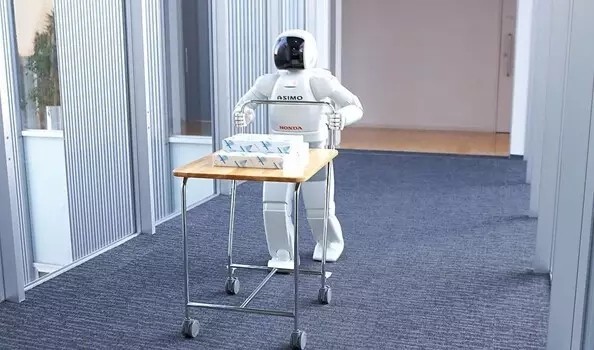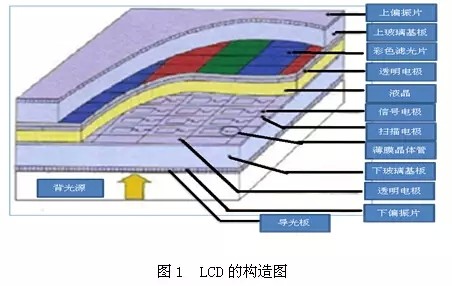What is a bionic robot?
"Bionic robot " refers to a robot that imitates creatures and works in biological characteristics. At present, in the western countries, mechanical pets are very popular. In addition, the imitation sparrow robot can serve as the task of environmental monitoring and has broad development prospects. In the 21st century, mankind will enter an aging society, and the development of “humanoid robots†will make up for the serious shortage of young labor, solve social problems such as family services and medical care in an aging society, and open up new industries and create new employment opportunities. . â€
Bionic frog robot design
The frog jump has the characteristics of strong explosiveness and long distance. It can easily overcome obstacles and has good environmental adaptability. Its biological structure and behavior are reasonable, flexible and efficient. Based on the analysis of frog biometrics and jumping motion mechanism, the complex structure is simplified, and a mechanism model for jumping motion is proposed, and the design of bionic frog is carried out.
1. Research background and significance
1.1 Foreign research level
McGill University of Canada analyzed the control algorithm of flexible robots, imitating animals using elastic energy storage elements such as muscles and tendons to reduce energy consumption. A single-legged jumping robot with flexible hip joints and legs was developed with a jumping speed of 1.25m/s. And the drive power is only 48W.
The University of Ohio and the University of Ohio collaborated to study the gait and dynamics of various animal runs, and developed a kind of animal with low energy consumption, elastic energy storage and low inertia. robot.
Scientists at Tokyo Institute of Technology in Japan have developed a robotic cat by analyzing the structure of the half-body of the cat during the process of climbing the wall. The jumping action does not pursue the height reached in the whole movement, but passes through the coordinated movement of the limbs like a cat. obstacle.
1.2 Domestic research level
Harbin Institute of Technology simplified the biological model by analyzing the movement principle of locust take-off, established the theoretical model of the robot, and analyzed it from kinematics and dynamics. Finally, two sets of prototypes based on motor and electromagnet drive were designed and carried out. Experimental research.
Shanghai Jiaotong University designed a joint elastic walking mechanism to imitate the lower limbs of the human body. They placed elastic devices in the lower legs of the robot. The four sets of parallel elastic elements and the robotic leg shells are the composite of the four-bar linkage of the frame, which makes the mechanism generate buffering and energy storage effects.
Northwestern Polytechnical University analyzed the biomorphology and movement mechanism of kangaroos, and proposed a model of bionic kangaroo robotic mechanism with flexible toes. The kinematics and dynamics analysis of the two stages of robot landing and vacancy were carried out, and the full jump cycle joints were studied. The trajectory planning of space has laid a theoretical foundation for the realization of kangaroo robots and solving key technologies such as jumping and bouncing dynamics.
1.3 conventional jumping robot
In 1980, Professor Raibert of the MIT Leg Laboratory developed the world's first single-legged robot that moves in a continuous jump. The movement of the robot is limited to a plane with a cylinder mounted on the leg. Therefore, its movement on the ground is similar to an inverted pendulum with a spring. The basic motion model is shown in the figure. The mechanism has a translational freedom in the X direction and a rotational freedom e between the foot and the body. After the jump and landing process is analyzed and calculated by kinematics and dynamics, as long as the law is followed. With additional control, continuous and stable jumping motion can be maintained, and MHRaibert specializes in the book to discuss this model. In addition, many scholars have carried out mathematical analysis and simulation of similar institutions from various angles. The current research on the Raibert jump model focuses on how to balance the control of this non-holonomic constraint system.

1.4 general frog robot
Professor Raibert and others at the Massachusetts Institute of Technology have developed a variety of bionic walking or crawling robots. There are two leg-type robots that can jump forward. One is the two-dimensional jumping robot Uniroo}42}, whose leg structure is similar to the hind legs of kangaroos, as shown. The robot has four joints, namely the tail joint, the ankle joint, the knee joint and the step joint. They are driven by four hydraulic cylinders and controlled to realize the jump and balance of the system, and the lateral direction is stabilized by the rod connected to the ground. The other is a three-dimensional jumping robot 3DB1peCl} 43, 44], as shown in Figure 1-12. The ankle joint has two degrees of freedom and the leg length is controlled by the cylinder. The robot one-leg dynamic balance control system consists of three parts: the forward speed of a part of the control mechanism, one part controls the angle between the body and the metal leg, and the other part controls the bounce height. The robot has good balance and motion stability, and can realize movements such as running, jumping and even flipping.

1.5 meaning
In today's world, the level of scientific and technological development is progressing. The field of robotics research has developed into aerospace, surface underwater, underground pipelines and other environments. Future robots will replace human work in an environment where humans cannot work. People demand that robots not only adapt to the original basics. Requirements, but also adapt to the unknown environment, which is very flexible for the flexibility, adaptability and survivability of the robot.
Mobile performance is the key capability of future robots in many occasions. In order to complete tasks, robots are often required to detect, detect, attack, and interfere in restricted areas that people cannot enter. The bionic frogs we designed use the jumping movement method, can adapt to different surface, realize the crossing of ditches and obstacles, have a wide range of activities, avoid risk and survivability, have strong mobility, and therefore can replace people to reach unpredictable Carry out various activities in the environment to complete the task.
The frog jump has the characteristics of strong explosiveness and long distance. It can easily overcome obstacles and has good environmental adaptability. Its biological structure and behavior are reasonable, flexible and efficient. Based on the analysis of frog biometrics and jumping motion mechanism, the complex structure is simplified, and a mechanism model for jumping motion is proposed, and the design of bionic frog is carried out. The frog's forelimb is simplified as an active shoulder joint and a passive elbow joint to achieve its ability to support cushioning and posture adjustment. The hind limb uses a five-bar mechanism as the main body of the leg, and the sole is added to ensure its stability. The hind limbs realize the jumping action through the motor control, which has great feasibility. The hind limb five-bar mechanism has the mechanical laws that are known when the frog jumps, thereby achieving a good jumping function.
Solar Inverter,Centralized Inverter,Off-Grid Inverter,Grid -Connected Inverter
Fuzhou Mei Li Cheng Imp&Exp Co., Ltd , https://www.mlc-solar.com